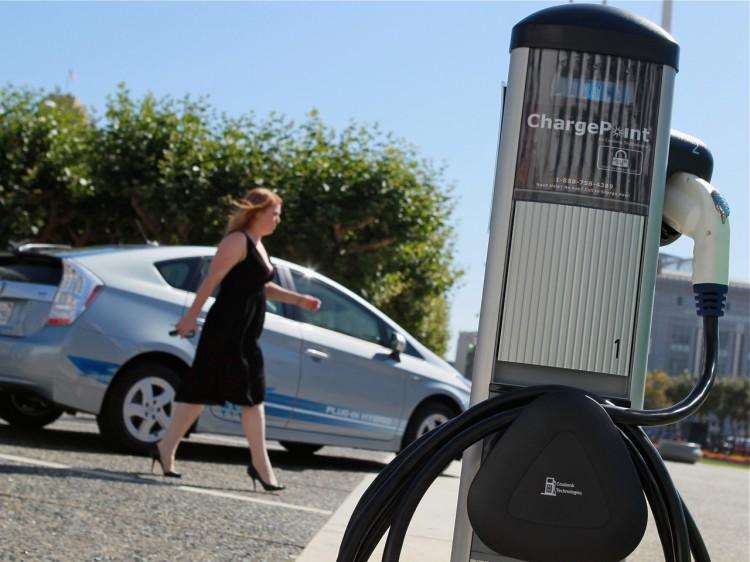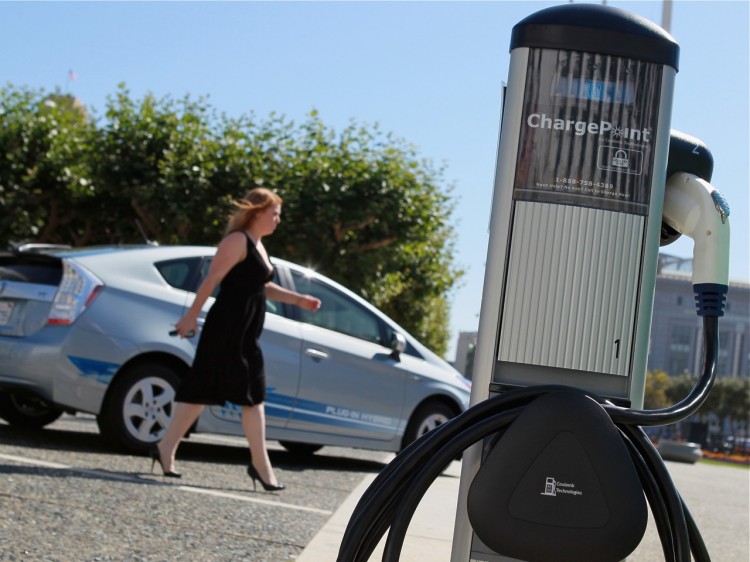Sale of electric vehicles in any given area has to be preceded by electric vehicle charging stations, without which the cars would have only a limited driving range.
By 2017, more than 1.5 million plug-in electric vehicles (PEVs) stations will have been installed along American roadways, with a total of 7.7 million locations worldwide.
Electric vehicle charging equipment prices are still rather high, as such equipment presently is produced by smaller-sized manufacturers. But as the market continues to grow toward maturity, global electronic companies will enter the field, and such equipment will be produced in large quantity, driving the price down.
“Basic electric vehicle supply equipment will quickly become a commodity. EVSE [electric vehicle supply equipment] prices will fall by 37% through 2017 as costs are driven lower by competition from large electronics companies as well as volume production,” said John Gartner, senior analyst at Pike Research, a marketing and consulting firm, in a 2011 press release.
Total revenue is projected to reach $4.3 billion for electric vehicle charging equipment worldwide by 2017, compared to $400 million in 2011.
To maintain revenues, given falling equipment prices, electric charging equipment manufacturers will produce and bring to market products that will protect the equipment from corroding.
“Manufacturers will integrate their equipment with external storage units, home energy management systems, and smart grid equipment to add value and increase their revenue,” Gartner said.
Electric Vehicle Charging Stations
“Some cities have relied on federal grant money to install numerous charging stations, while others have allowed private companies to install these refueling points,” according to a Feb. 8 article published on the Charging Stations website.
A color-coded map of U.S. electric vehicle charging stations can be found on the www.evmaps.info website.
In February, the North Carolina (N.C.) Solar Center, operated by the College of Engineering at North Carolina State University, announced the ribbon-cutting ceremony for 10 new electric vehicle charging stations that were installed at Biogen Idec’s Research Triangle Park campus location. Biogen Idec, based in Weston, Mass., purchased these stations with $12 million of funding from the U.S. Department of Energy (DOE) under the Recovery and Reinvestment act.
“The ability to charge an electric car at work has been recognized as a critical factor in an individual’s decision to purchase an electric vehicle and is expected to encourage early adopters,” according to the N.C. Solar announcement.
N.C. Solar stated that electric vehicles are cheaper to operate, with the electric charge costing between $0.02 and $0.04 per mile, while fuel for a conventional car costs between $0.10 and $0.15 cents per mile.
Hawaii received $4.5 million from the DOE State Energy Program and the Recovery Act and as of February 2012 had installed 14 stations. Six Hawaiian firms received a total of $2.6 million to install many more stations throughout Hawaii by April 2012.
“Hawaii is the most oil dependent state in the nation with more than 95 percent of its energy supplied by imported fossil fuels. Gas and electricity prices are also far above the national average. To increase its energy independence, Hawaii is revving up its state electric vehicle program,” according to a Jan. 31 article by the DOE.
Oregon has several programs addressing electric car charging stations, including the EV Project.
The EV Project is overseen by ECOtality Inc, which was awarded $99.8 million in grants from the DOE to deploy electric vehicles and charging infrastructure in five states.
“In June 2010, the Project was granted an additional $15 million by the U.S. Department of Energy. With partner matches, the total value of the Project is now approximately $230 million,” according to the ECOtality website.
At the same time, the Oregon state government is involved in the West Coast Green Highway infrastructure project, which will run from the Canadian border in Washington state to Mexico’s border. Oregon received federal funds in the amount of $700,000 in 2010 for the installation of eight charging stations along the Eugene to Ashland section of the West Coast Green Highway.
During 2010, Oregon also received $2 million from the U.S. Department of Transportation for the installation of 20 charging stations with construction beginning this year.
New York City has installed numerous charging stations and is said to be the U.S. city with the most such stations. Atlanta and Washington, D.C., citizens can electrically charge their cars at one of 10 charging stations throughout their cities. Owners of electrically charged vehicles in Miami can charge their vehicles at one of 10 stations on a 50-mile stretch along the coast.
California has the most electric car charging stations in the United States with 1,458 stations. Texas follows with 462 stations, Washington state with 459 stations, and Florida with 386 stations.
As of February, there is not a single electric car charging station in Alaska, Delaware, Kentucky, Maine, Montana, North Dakota, Nebraska, Oklahoma, South Dakota, and Wyoming.






